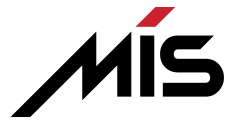Silicones are synthetic polymers with a wide range of industrial applications. They are used in a variety of products, including adhesives, lubricants, and coatings. According to the latest data from the World Trade Organization (WTO), the top exporters of silicones, primary forms in 2021 were Germany, China, the United States, Japan, and France. Let’s take a closer look at these countries’ silicone exports and the factors contributing to their success.
1. Germany: Leading the Pack
Germany was the top exporter of silicones, primary forms in 2021, with exports worth $1.83 billion. The country’s dominance in this industry can be attributed to its robust research and development (R&D) infrastructure and its skilled workforce. German companies such as Wacker Chemie AG and Momentive Performance Materials GmbH are global leaders in silicone production, offering high-quality products to meet the demand of various industries.
2. China: Catching Up Quickly
China came in second on the list, with exports worth $1.56 billion. The country’s fast-growing economy and large consumer base are driving the demand for silicones in the domestic market. Chinese companies such as Dongyue Group Ltd. and Jiangsu Hongda New Material Co. Ltd. are investing heavily in R&D to improve their silicone production technology and gain a competitive edge in the global market.
3. United States: A Strong Player
The United States is the third-largest exporter of silicones, primary forms, with exports worth $1.38 billion in 2021. The country’s well-established chemical industry and advanced manufacturing processes make it a significant player in the global silicone market. Major U.S. companies such as Dow Inc. and Elkem Silicones USA Corp. are investing heavily in new product development and expanding their production capacities to meet the growing demand.
4. Japan: A Steady Performer
Japan is the fourth-largest exporter of silicones, primary forms, with exports worth $904 million in 2021. The country’s well-developed technology sector and highly skilled workforce are contributing to its success in the silicone industry. Japanese companies such as Shin-Etsu Chemical Co. Ltd. and Momentive Japan LLC are investing in R&D to develop innovative silicone products and improve their production processes.
5. France: A Niche Market
France is the fifth-largest exporter of silicones, primary forms, with exports worth $411 million in 2021. While the country’s overall silicone exports are relatively small compared to the other top players, French companies such as Elkem Silicones France SAS and Bluestar Silicones France SAS are highly specialized in the production of silicone elastomers, adhesives, and sealants. These products are in high demand in the automotive, construction, and electronics industries.
Conclusion
The silicone market is highly competitive, with many countries vying for a share of the global exports. The top exporters of silicones, primary forms, in 2021 were Germany, China, the United States, Japan, and France. These countries have established themselves as major players in the industry, thanks to their robust R&D infrastructure, advanced manufacturing processes, and skilled workforce. As the demand for silicone products continues to grow, we can expect to see more innovation and competition in the global market.
FAQs
- What are the primary applications of silicones?
- Silicones are used in a wide range of products, including adhesives, lubricants, coatings, and sealants. They are also used in the production of electronics, medical devices, and construction materials.
- Which country produces the most silicones
- Currently, there is no single country that produces the most silicones. Silicones are widely produced across the globe, with several countries having established a strong foothold in the market. However, Germany, China, the United States, Japan, and France are the top exporters of silicones, primary forms in 2021 according to data from OEC World. These countries have advanced research and development capabilities, skilled workforces, and favorable market conditions, which have helped them dominate the global silicone market.
- What makes Germany the top exporter of silicones?
- Germany has a strong research and development infrastructure and a highly skilled workforce, which has allowed German companies to produce high-quality silicone products that meet the demand of various industries.
- How is China catching up with the top exporters of silicones?
- China’s fast-growing economy and large consumer base are driving the demand for silicones in the domestic market. Chinese companies are investing heavily in R&D to improve their silicone production technology and gain a competitive edge in the global market.
- What are the primary challenges faced by the silicone industry?
- One of the primary challenges faced by the silicone industry is the increasing demand for sustainable and eco-friendly products. Companies are investing in R&D to develop more environmentally friendly silicone products and production processes. Additionally, the industry faces competition from alternative materials and rising raw material costs.

